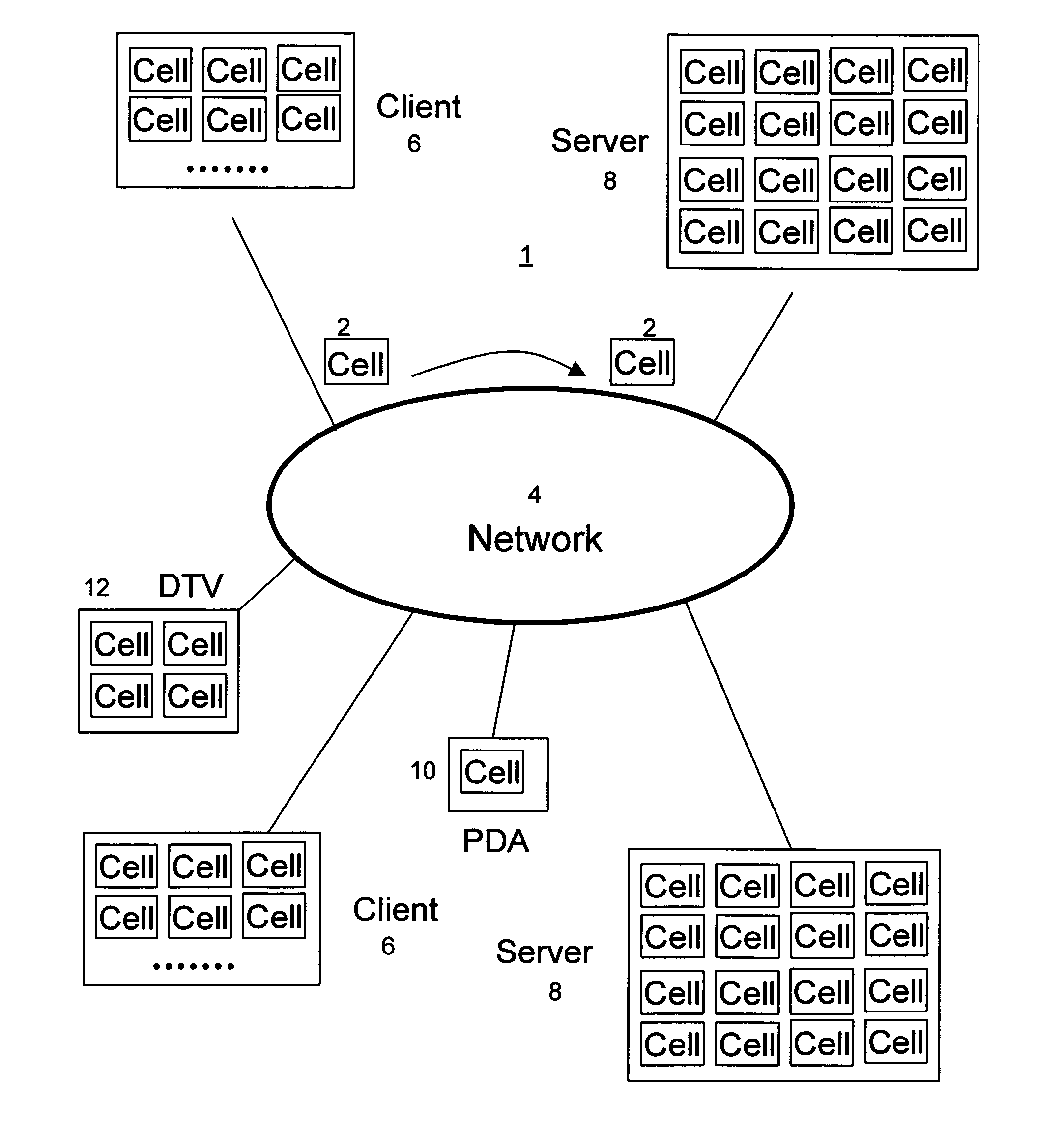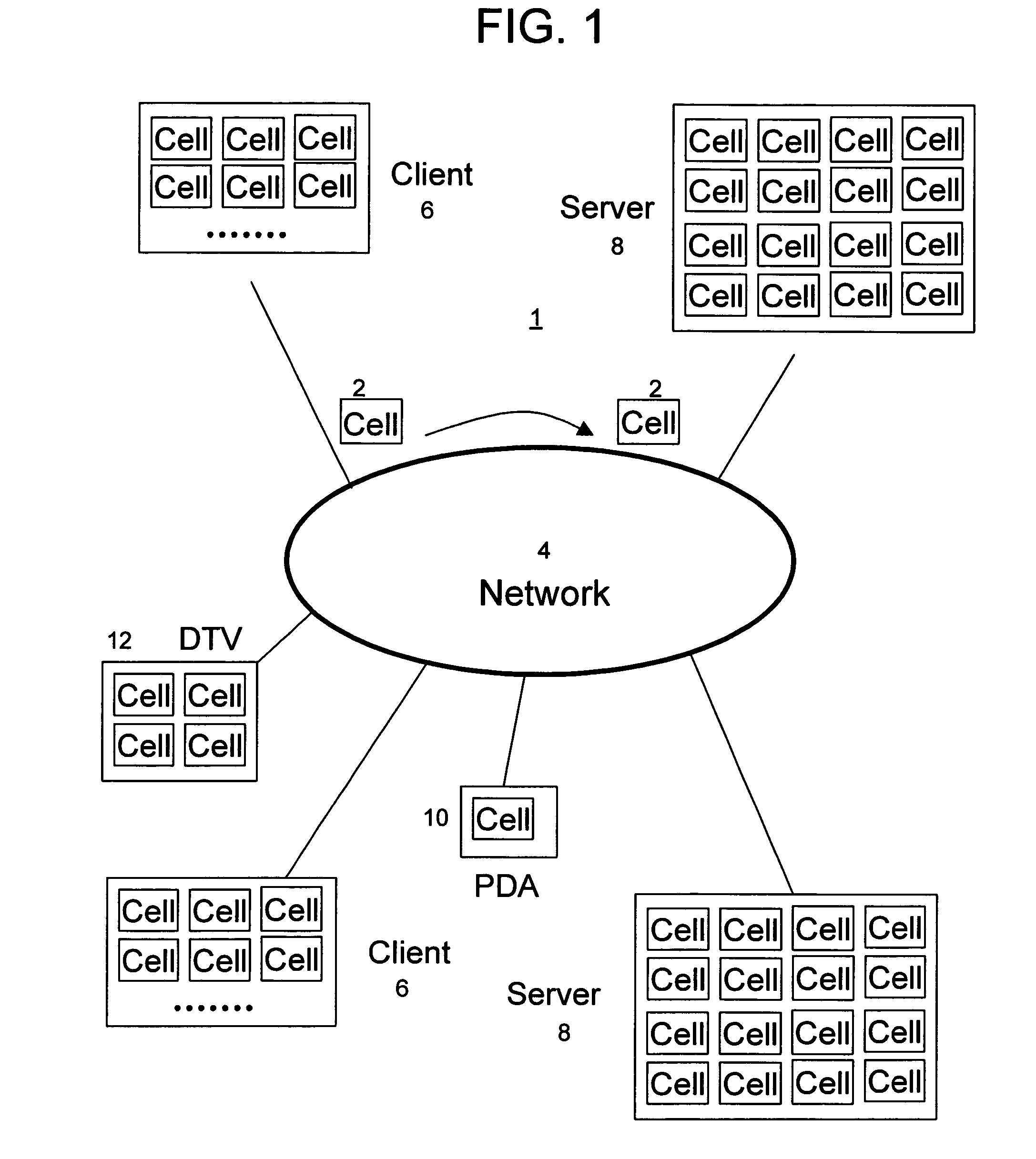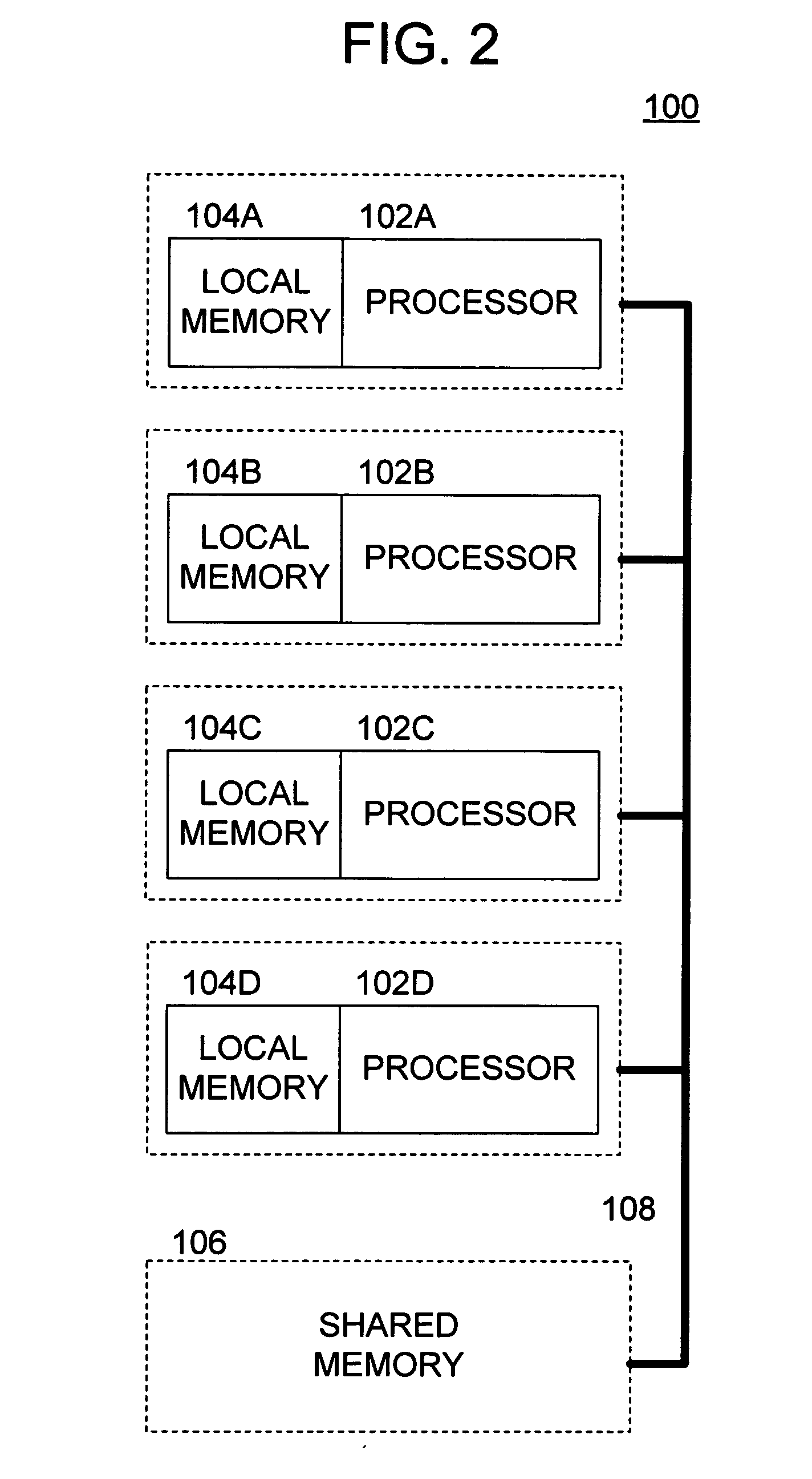Methods and apparatus for secure data processing and transmission
a data processing and transmission method technology, applied in the field of methods and apparatus for secure data processing, can solve the problems of complex combination of computers and computing devices on today's computer network, complex processing and sharing of data and applications, and high processing speed of network applications, so as to facilitate the building of members, facilitate the transmission of applications and data, and improve the effect of security
- Summary
- Abstract
- Description
- Claims
- Application Information
AI Technical Summary
Benefits of technology
Problems solved by technology
Method used
Image
Examples
Embodiment Construction
[0053] The overall architecture for a computer system 1 in accordance with the present invention is shown in FIG. 1. System 1 includes network 4 to which is connected a plurality of computers and computing devices. Network 4 can be a LAN, a global network, such as the Internet, or any other computer network.
[0054] The computers and computing devices connected to network 4 (the network's “members”) include, e.g., client computers 6, server computers 8, personal digital assistants (PDAs) 10, digital television (DTV) 12 and other wired or wireless computers and computing devices. The processors employed by the members of network 4 are constructed from the same common computing module. These processors also preferably all have the same ISA and perform processing in accordance with the same instruction set. The number of modules included within any particular processor depends upon the processing power required by that processor.
[0055] For example, since servers 8 of system 1 perform m...
PUM
 Login to View More
Login to View More Abstract
Description
Claims
Application Information
 Login to View More
Login to View More - R&D
- Intellectual Property
- Life Sciences
- Materials
- Tech Scout
- Unparalleled Data Quality
- Higher Quality Content
- 60% Fewer Hallucinations
Browse by: Latest US Patents, China's latest patents, Technical Efficacy Thesaurus, Application Domain, Technology Topic, Popular Technical Reports.
© 2025 PatSnap. All rights reserved.Legal|Privacy policy|Modern Slavery Act Transparency Statement|Sitemap|About US| Contact US: help@patsnap.com



